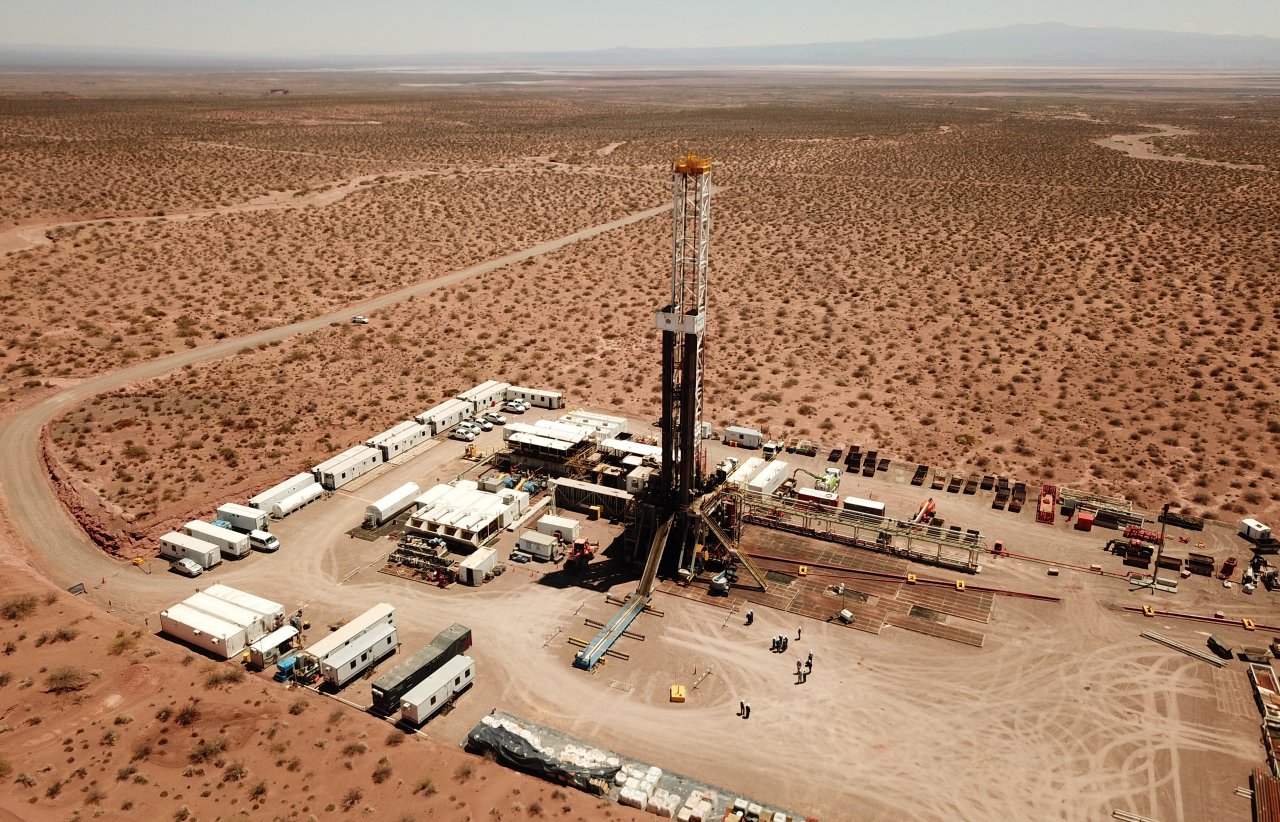Argentina NatGas Woes Risk Slide Back into Energy Deficit
BUENOS AIRES (Reuters) — Argentina, which had steadily dug itself out of a deep energy deficit to post a slender surplus last year, is set to sink back into an energy hole this year that could reach $1 billion due to local natural gas shortfalls driving the need for expensive LNG imports.
The South American country, home to the huge Vaca Muerta shale formation, has seen a two-speed rebound from the coronavirus pandemic with oil production soaring, but gas output stalled.

Oil output rebounded faster helped by policies including a higher local "criollo barrel" price that shielded producers, while a freeze on domestic gas prices - used for cooking and heating - pushed firms away from natural gas.
Former energy officials and analysts told Reuters moves to revive gas production, such as a state Gas Plan from Jan. 1, came too late for winter demand, driving the need for imports that saw Argentina add a second regasification unit in the port of Bahía Blanca to receive liquefied natural gas (LNG) cargoes.
"It was too late to get the gas for the (Southern Hemisphere) winter," explained José Luis Sureda, the country's former secretary of hydrocarbon resources.
"All of 2020 there was no activity. All the fracking equipment positions in Neuquén were dismantled," he added.
Daniel Dreizzen, an analyst at consultancy Ecolatina and former secretary of energy planning, estimated that the energy deficit would end the year at close to $1 billion, taking dollars out of central bank as the country tries to revive a recession-hit economy and replenish foreign currency reserves.
"The energy outlook is just not cooperating with the macroeconomy, rather it will put it in trouble," said Dreizzen.
Argentina's net reserves plunged since 2019 amid debt and currency crises that sparked tough capital controls to stem the outflow. The government is also in talks with the International Monetary Fund to revamp some $45 billion it cannot repay.
The government rolled out a stimulus plan for gas to guarantee a production floor at a competitive price, hoping to replace gas imports, though that is yet to have a major impact.
"The energy problem, the energy deficiency in Argentina, is accelerating," said Agustín Monteverde, an economist at the consulting firm Massot / Monteverde y Asociados, who agreed with the estimated $1 billion dollar deficit.
Sureda said the deficit could be much higher.
The energy ministry did not respond to repeated requests for comment for this story.
Argentina had a narrow energy surplus in the first four months of the year, but that is expected to turn around with far higher gas usage over the southern winter.
'PERFECT STORM'
According to Dreizzen, oil exports will increase 20% in volume this year to 90,000 barrels per day from an average of 77,000 bpd in 2020. That means oil exports would total some $2 billion, more than double the $930 million exported in 2020.
On the import side, the country will double its purchases in volume of LNG, with prices that have tripled versus last year hitting the energy balance. Gas exports to Chile would fall with a 20% increase in gas imports from Bolivia.
"Today international import prices are sky high, while we have let local production decline. This is a perfect storm," Sureda, the former energy official, added.
The recovery of activity was also hit by protests in April by health workers amid the pandemic, blocking access roads to key areas of Vaca Muerta, the world's fourth largest shale oil reserve and second largest shale gas reserve.
Argentina relies on the development of the formation, an area the size of Belgium that literally means the "Dead Cow." Development is spearheaded by state energy giant YPF.
The capacity of gas pipeline has also hindered the speed of the rebound, industry sources said, adding that capacity could hit reached by August as firms tried to ramp up production to meet targets set out in the government's stimulus plan.
That investment to bolster capacity is being held back by strict capital controls in the country, imposed since 2019 to protect the local peso currency and defend dwindling levels of dollar reserves, but that complicates business.
Inflation is running at an annualized rate near 50%, while the national and many regional governments have been mired in debt restructuring talks over the last two years.
"It's hard for me to see a fresh boom of money coming in. There are many financial operations problems, whether you want to bring in money or take it out," Dreizzen said.
Related News
Related News

- Keystone Oil Pipeline Resumes Operations After Temporary Shutdown
- U.S. House Passes Bill to Reverse Biden's LNG Pause
- Biden Administration Buys Oil for Emergency Reserve Above Target Price
- Enbridge to Invest $500 Million in Pipeline Assets, Including Expansion of 850-Mile Gray Oak Pipeline
- Williams Delays Louisiana Pipeline Project Amid Dispute with Competitor Energy Transfer
- Evacuation Technologies to Reduce Methane Releases During Pigging
- U.S. Regulators Approve Mexico Pacific LNG's Saguaro Connector Pipeline
- Editor’s Notebook: Nord Stream’s $20 Billion Question
- Enbridge Receives Approval to Begin Service on Louisiana Venice Gas Pipeline Project
- Russian LNG Unfazed By U.S. Sanctions




Comments